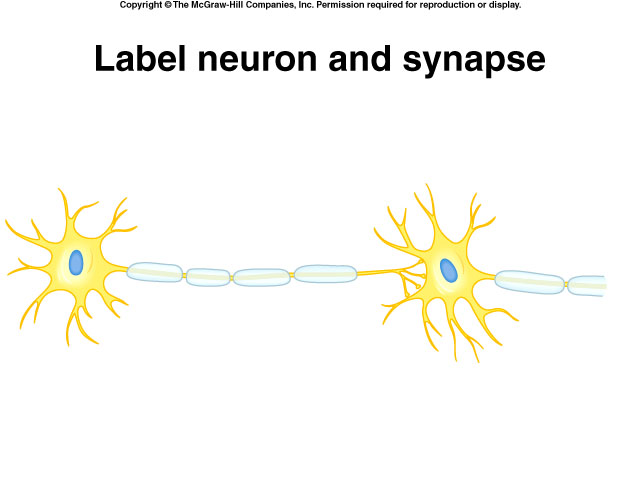1. In the illustration below, label:
a. dendritesb. axonsc. cell bodiesd. a Schwann cell nucleuse. a myelin sheathf. a synapse <a onClick="window.open('/olcweb/cgi/pluginpop.cgi?it=jpg:: ::/sites/dl/free/0070271348/27397/ch31ta.jpg','popWin', 'width=NaN,height=NaN,resizable,scrollbars');" href="#"><img valign="absmiddle" height="16" width="16" border="0" src="/olcweb/styles/shared/linkicons/image.gif"> (42.0K)</a> <a onClick="window.open('/olcweb/cgi/pluginpop.cgi?it=jpg:: ::/sites/dl/free/0070271348/27397/ch31ta.jpg','popWin', 'width=NaN,height=NaN,resizable,scrollbars');" href="#"><img valign="absmiddle" height="16" width="16" border="0" src="/olcweb/styles/shared/linkicons/image.gif"> (42.0K)</a> 2. How do the functions of sensory, motor, and interneurons differ? 3. Describe the distribution of charges in the membrane of a resting neuron. 4. What ionic events cause the wave of depolarization and repolarization constituting an action potential? 5. How does myelin alter conduction of an action potential along a nerve fiber? 6. In what part of the brain do the qualities of “mind” lie? 7. How does the structure of the cerebral cortex provide different degrees of sensitivity in different body parts? Click Here for the Answers 1. Describe the differences between transmission of an action potential and synaptic transmission. 2. List 5 skills you use in everyday life that depend upon some part of your nervous system. Indicate what part of the nervous system controls each skill. 3. What role does the cerebellum play in athletics? 4. A person who has narcolepsy (uncontrollably falling asleep) probably has a defect in what part of the brain? 5. You are walking home from an evening class when you hear footsteps and heavy breathing and then see a tall shadow approaching from behind you. What is your nervous system likely to do? Click Here for the Answers | 


 2002 McGraw-Hill Higher Education
2002 McGraw-Hill Higher Education

 2002 McGraw-Hill Higher Education
2002 McGraw-Hill Higher Education